TL;DR
As the crypto scene grows worldwide, we've seen the rise of various chains and methods to create using blockchain as a secure, (often) decentralized, medium for transactions. But what about the mother chain that nowadays commands approximately 60% of the liquidity dominance and stands as the 5th most valuable asset in the world? If you haven’t yet explored it, you should definitely take a look at Bitcoin Ordinals, an established protocol that unlocks the most coveted treasure: the ability to build directly on the Bitcoin chain.
Introduction
Bitcoin, the pioneer of blockchain technology, has long been celebrated as a decentralized store of value and a medium for secure peer-to-peer transactions. However, its potential has historically been constrained by its limited programmability compared to smart-contract based chains like Ethereum. Enter the Bitcoin Ordinals protocol, introduced by Casey Rodarmor in January 2023, which has redefined what's possible on Bitcoin by enabling the inscription of data onto individual satoshis, the smallest unit of Bitcoin. This innovation has opened a Pandora’s box of creativity, allowing developers and artists to craft everything from non-fungible artifacts to fungible token standards, and projects related to DeFi, gaming, generative art, literature, IDs and more, all natively on the Bitcoin blockchain.
In this article, we will map the scene and highlight some projects to show the possibilities unlocked by Ordinals, spotlight pioneering projects and standards like BRC-20 or Runes, Pizza Ninjas, OnChainMonkey, Natcats, Liquidium and discuss the opportunities and challenges of building on the most secure, liquid, and decentralized chain in existence.
But first, what are Bitcoin Ordinals?
Bitcoin Ordinals are a groundbreaking protocol that assigns unique serial numbers to individual satoshis, enabling them to be tracked and inscribed with data such as images, text, videos, or even applications. Made possible by the 2017 SegWit and 2021 Taproot upgrades, Ordinals allow for the creation of Bitcoin-native digital assets without relying on layer-2 solutions or sidechains. This has led to a surge of innovation, transforming Bitcoin from a simple transactional ledger into a vibrant ecosystem for digital creativity.
Unlike other NFT ecosystems, which rely on smart contracts, Ordinals leverage Bitcoin’s robust security and immutability to embed data directly on-chain. This approach ensures permanence and decentralization, making Ordinals an attractive foundation for a wide range of use cases.
Pioneering Use Cases of Bitcoin Ordinals
1. Fungible Token Standards: BRC-20 and Runes
One of the most significant developments enabled by Ordinals is the creation of fungible token standards on Bitcoin, such as BRC-20 and Runes.
- BRC-20: Launched in March 2023 by an anonymous developer Domo, BRC-20 is an experimental token standard that mimics Ethereum’s ERC-20 by using JSON inscriptions on satoshis to create fungible tokens. These tokens enable use cases like DeFi, meme coins, and tokenized assets. Despite reaching a market cap of $2.6 billion, BRC-20 has faced criticism for generating excessive unspent transaction outputs (UTXOs), which can congest the Bitcoin network and increase transaction fees. The first and main BRC-20 is “Ordi” and has been listed by major exchanges as Binance.
- Runes: Proposed by Casey Rodarmor in September 2023 and launched during the April 2024 Bitcoin halving, Runes is a more efficient alternative to BRC-20. By leveraging Bitcoin’s UTXO model and the OP_RETURN opcode, Runes minimizes blockchain bloat and reduces “junk” UTXOs, offering a streamlined approach to fungible token creation. Runes supports applications like stablecoins, governance tokens, and meme coins. The highest Rune by market cap is DOG•GO•TO•THE•MOON that was airdroped for free to “Runestone” inscription holders. It has a strong army of holders behind and has been listed by Kraken, the first tier 1 exchange to list runes.
These token standards demonstrate Bitcoin’s evolution into a platform for tokenized economies, and it’s unparalleled security.
2. Gaming on Bitcoin: Pizza Ninjas and Satoria
Ordinals have also paved the way for innovative gaming projects on Bitcoin, bringing interactive and decentralized experiences to the chain.
- Pizza Ninjas: This project combines gaming with Ordinals by creating collectible in-game assets inscribed on satoshis. Players can own, trade, or utilize these assets within a decentralized gaming ecosystem, leveraging Bitcoin’s security for asset ownership. Such projects highlight the potential for Ordinals to power play-to-earn models and in-game economies. For instance, they inscribed a Nintendo 64 emulator directly into the Bitcoin chain. They’ve also launched “Pizza Pets”, a tamagochi-like game based on the Bitcoin chain blocks, where players have to inscribe food and other items in order to keep them alive.
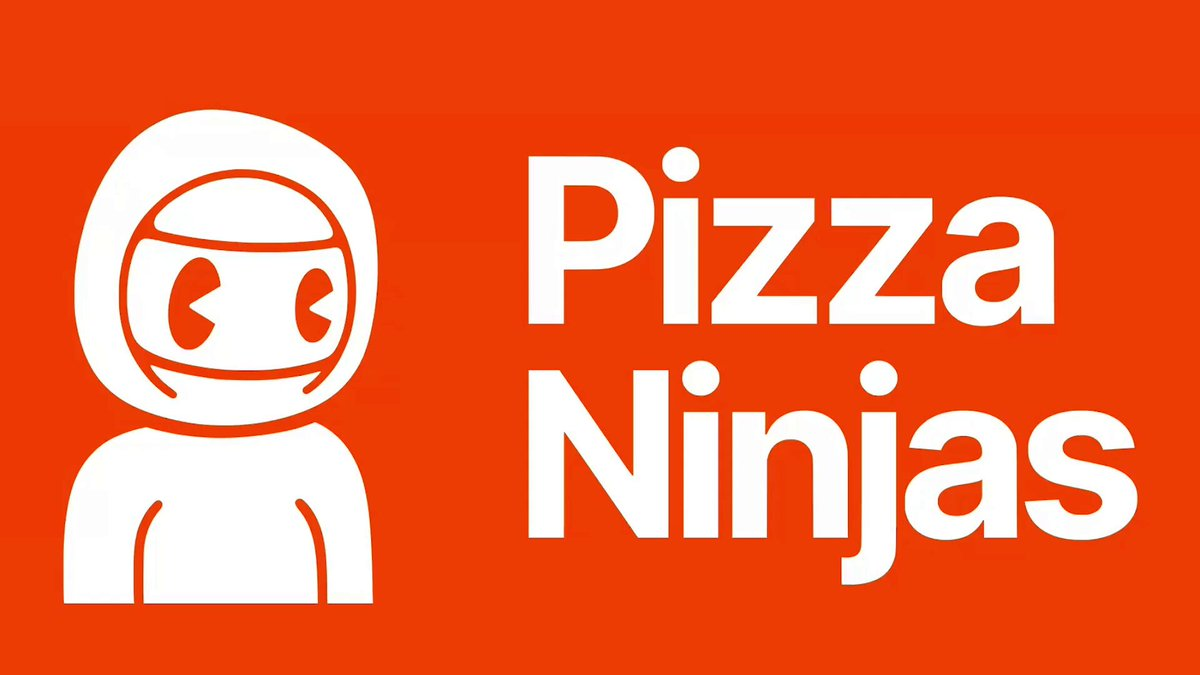
- Satoria: Another gaming project, Satoria uses Ordinals to create unique, on-chain game items and characters, enabling true ownership of digital assets. By embedding game data directly on Bitcoin, Satoria ensures that assets are immutable and verifiable, fostering trust in gaming ecosystems. They’ve launched their main collection called “Bitcoin Machines” and a Rune called “ZBIT”
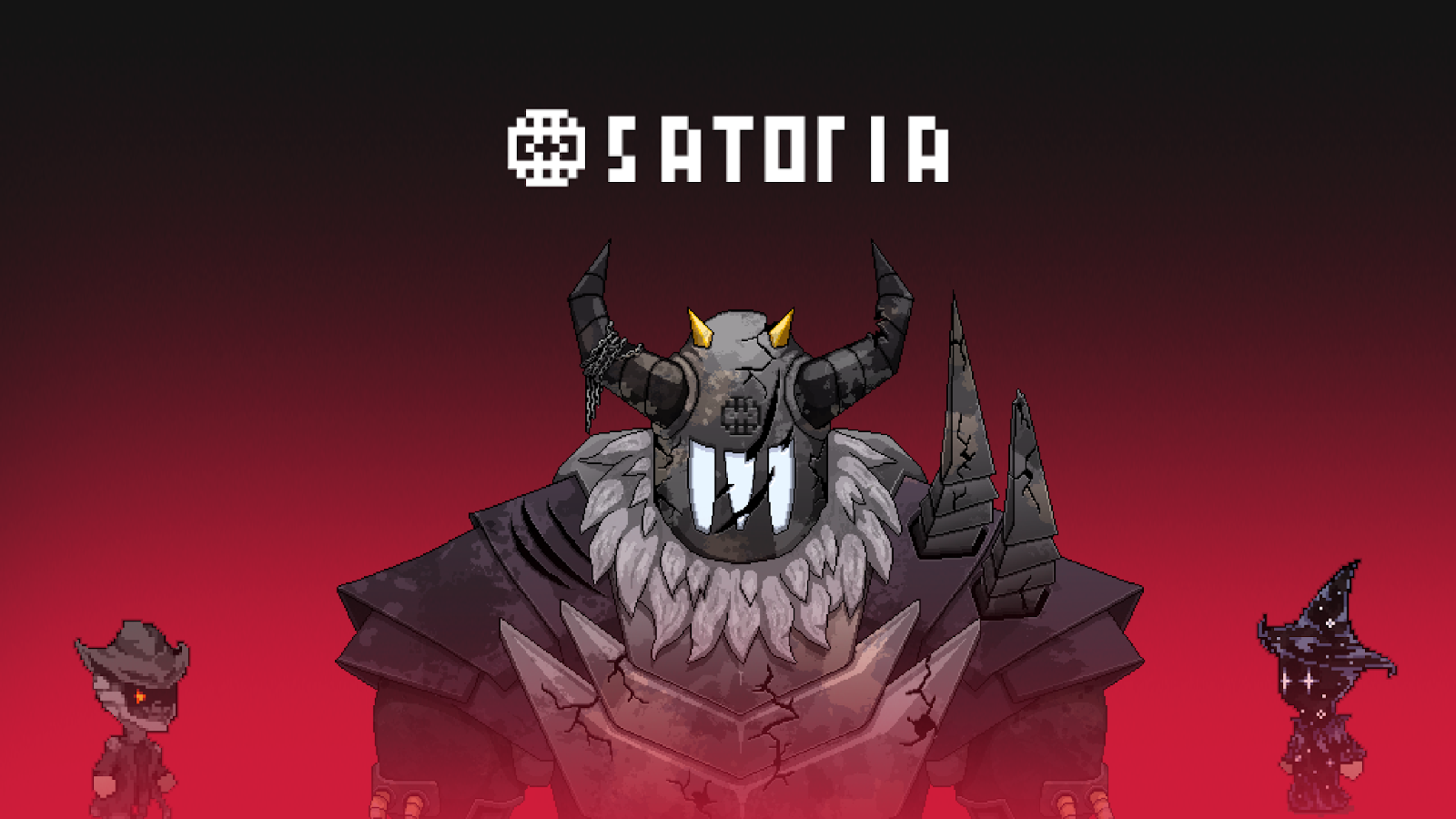
These projects showcase how Ordinals can transform Bitcoin into a hub for decentralized gaming, attracting new users and developers to the ecosystem. Are you a game developer? Start considering Bitcoin for your onchain assets!
3. Generative Art: OnChainMonkey and Natcats
Generative art has found a natural home on Bitcoin through Ordinals, with projects like OnChainMonkey and Natcats pushing the boundaries of digital creativity.
- OnChainMonkey: A trailblazer in Bitcoin-based art, OnChainMonkey creates fully on-chain generative artworks inscribed directly on satoshis. Notably, its OCM Genesis collection pioneered several inscription techniques that opened new possibilities for artists. Among its innovations is the Parent-Child provenance model, making OCM the first 10k collection to be inscribed this way, offering true on-chain provenance by linking all 10,000 inscriptions to a single parent. These inscriptions are also recursive, referencing the famous parent inscription (#20119), and were inscribed sequentially on Block 9 450x satoshis, which were part of the first Bitcoin transaction ever, sent from Satoshi Nakamoto to Hal Finney.
Another remarkable innovation is the introduction of reinscription, the ability to inscribe multiple times on the same satoshi.

- Natcats: It is the first digital‑art collection generated by the Bitcoin blockchain and pioneered the Digital Matter Theory UNAT Standard on its introduction. It leverages the entropy of the Bitcoin chain to create inscriptions depending on the “bit” field of each block and it’s number. Natcats are produced when the property “3b” occurs within Bitcoin’s Bits field. This property is rare and has occurred only 8064 times across the 906698 blocks mined to date. Each Natcat has unique traits determined by the data properties of its Bitcoin block number. For example, Natcats generated from block numbers containing “420” will contain the trait catnip cig. Literally art generated by Bitcoin.
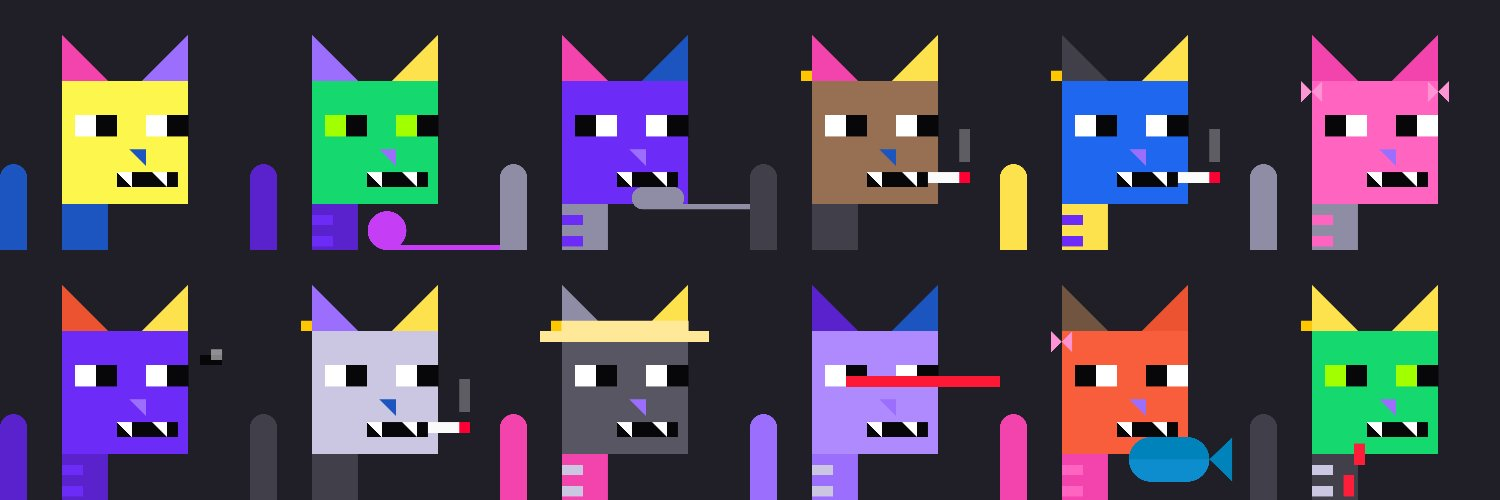
These generative art projects highlight Bitcoin’s potential as a canvas for creativity, with Ordinals enabling artists to craft unique, immutable digital works.
4. DeFi on Bitcoin, also known as BitcoinFi
- Liquidium: Having both fungible and non fungible assets on the network gives you the ability to have a onchain Bitcoin based lending protocol, and Liquidium leads the road on that field.
Users can borrow and lend agains Inscriptions, Runes or BRC-20s, creating a whole lending market full of opportunities. They are also adding swaps and cross-chain features, and they have their own utility rune called LIQUIDIUM•TOKEN which gives users the chance to have discounts on the fees and participate in the governance of the protocol. You can check their impressive stats here, including over $500 million in total loan volume and more than $8.5 million in interest paid to lenders
We are proud to collaborate as technical partners of some of these Liquidium products, stay tuned for more information!
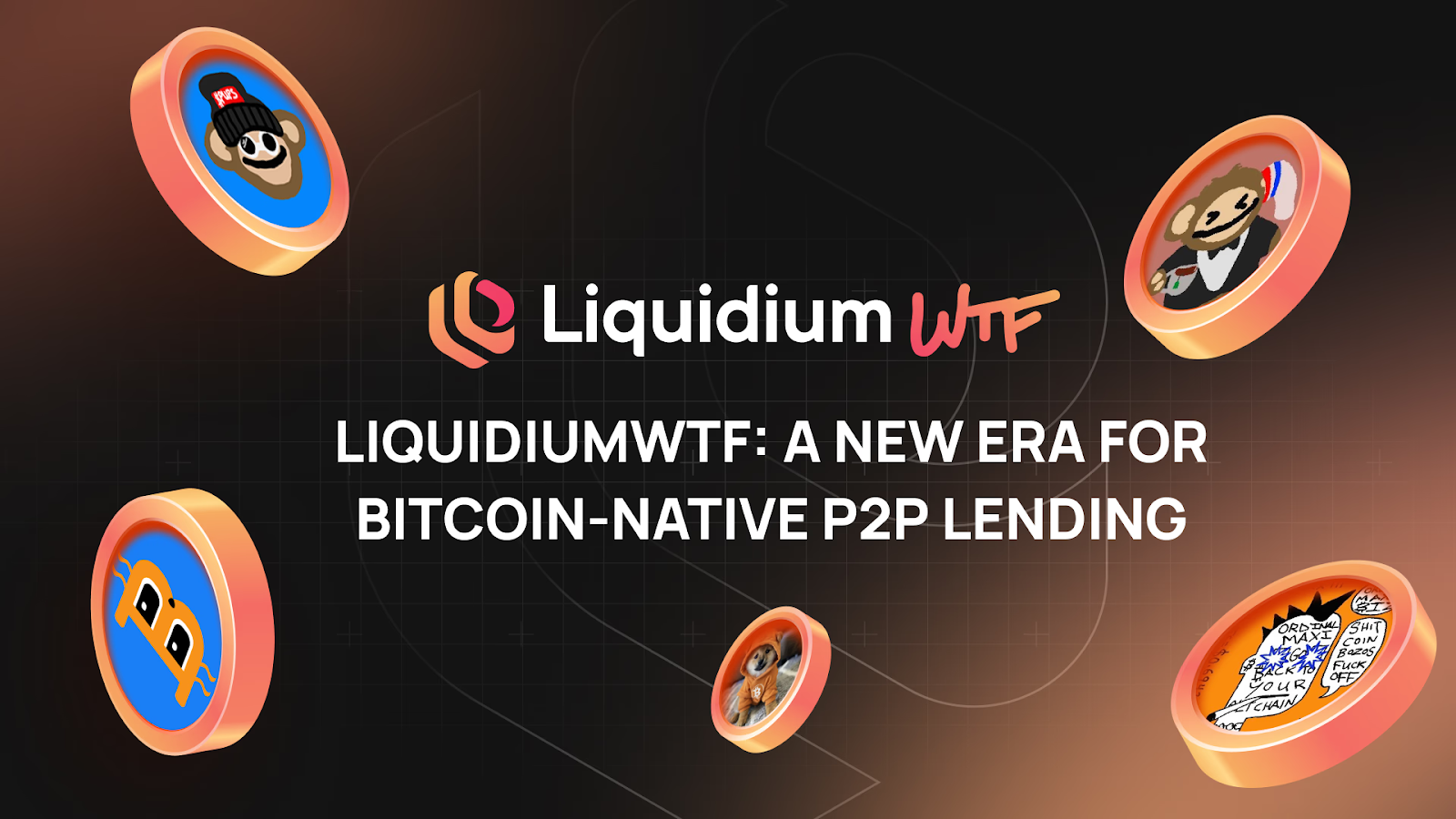
- Hermetica: Hermetica is the creator of USDh, the first Bitcoin-backed, yield-bearing synthetic dollar on Bitcoin L1 and L2s. The stablecoin consists of Bitcoin coupled with a short perpetual futures position, using the algorithm as the vehicle to secure the stable price of their stablecoin, which is called USDH•USDH•USDH•USDH and gives user the chance to swap Bitcoin to a USD pegged coin without leaving the Bitcoin chain. USDH•USDH•USDH•USDH also offer yield and it’s their tool to unlock DeFi activities on the Bitcoin chain.
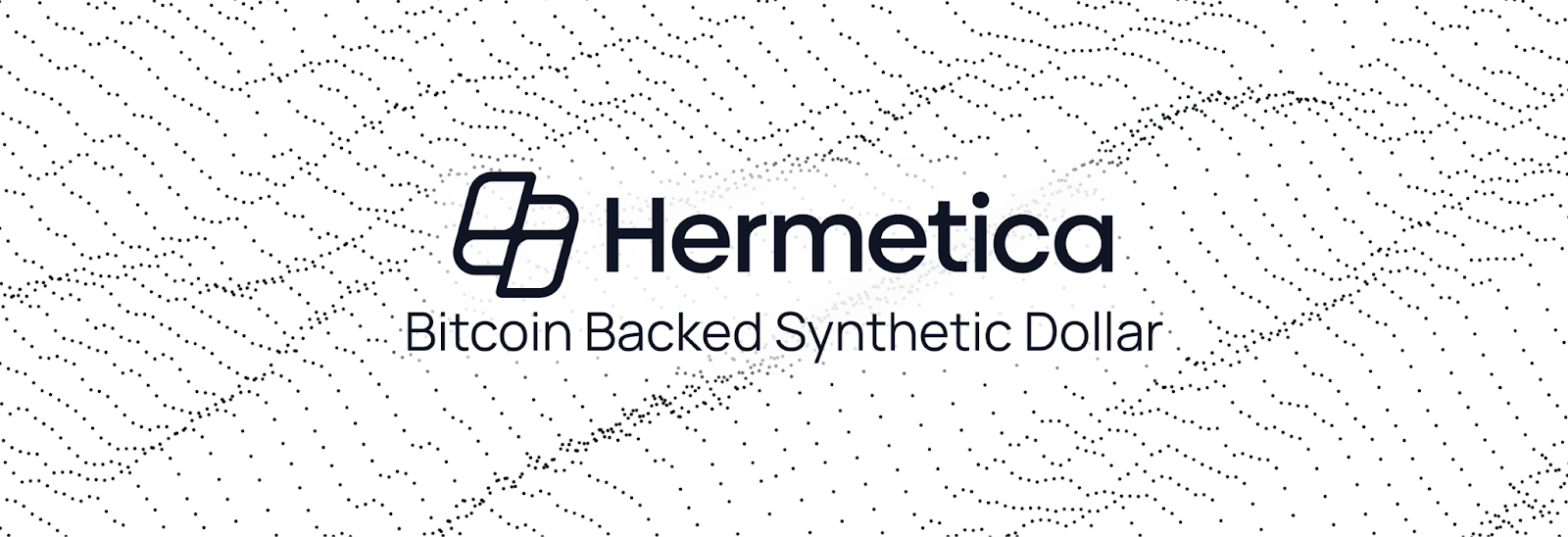
Opportunities of Building with Ordinals
Building on Bitcoin with Ordinals offers unparalleled advantages:
- Unrivaled Security: Bitcoin’s Proof-of-Work and global node network ensure unmatched security and decentralization, making Ordinals a rock-solid foundation for assets and applications.
- Massive Liquidity: Commanding ~60% of crypto’s liquidity, Bitcoin provides a vast market for Ordinals-based projects, boosting adoption and value.
- Diverse Use Cases: From DeFi and gaming to art and digital identities, Ordinals enable a broad spectrum of applications, expanding Bitcoin’s utility.
- Vibrant Community: Projects like OnChainMonkey (showcased at Christie’s) and Runes (7,000+ tokens minted in days) highlight a thriving ecosystem of creators and users.
Challenges to Consider
Despite its promise, Ordinals face hurdles:
- Network Congestion: BRC-20’s UTXO generation spiked fees in December 2023, straining Bitcoin’s network. While Runes mitigates this, scaling remains a concern.
- Scalability Limits: Bitcoin’s block size and throughput constraints challenge data-heavy inscriptions, requiring efficient design.
- Community Debate: Some Bitcoin purists view Ordinals as a departure from Bitcoin’s currency focus, sparking philosophical debates.
- Technical Barriers: Developing with Ordinals demands specialized knowledge of ordinal wallets and UTXO models, posing a learning curve.
What Can You Build with Ordinals?
Ordinals empower creators to push boundaries. Imagine:
- DeFi Platforms: Build stablecoins, lending protocols, or liquidity pools with Runes or BRC-20.
- Decentralized Games: Create immersive games with on-chain assets, like Pizza Ninjas or Satoria.
- Unique Collectibles: Craft generative art or NFTs with verifiable provenance.
- Tokenized Assets: Inscribe ownership proofs for real estate, art, or IP, enabling fractional ownership.
- Digital Identities: Create immutable, Bitcoin-backed IDs or credentials for secure verification.
Conclusion
The Bitcoin Ordinals protocol has ignited a creative revolution on the world’s most secure and liquid blockchain. From fungible tokens like BRC-20 and Runes to gaming ecosystems like Pizza Ninjas and Satoria, generative art like OnChainMonkey and Natcats, and DeFi pioneers like Liquidium and Hermetica, Ordinals prove Bitcoin is more than digital gold, it’s a canvas for the future. Despite challenges like network congestion and technical complexity, the possibilities are limitless.
At Rather Labs, we’re thrilled to explore Ordinals’ potential to empower our community. Whether you’re a developer, artist, or entrepreneur, now’s the time to sculpt satoshis and unleash your creativity on the Bitcoin blockchain.
Join the revolution, build on Bitcoin today!





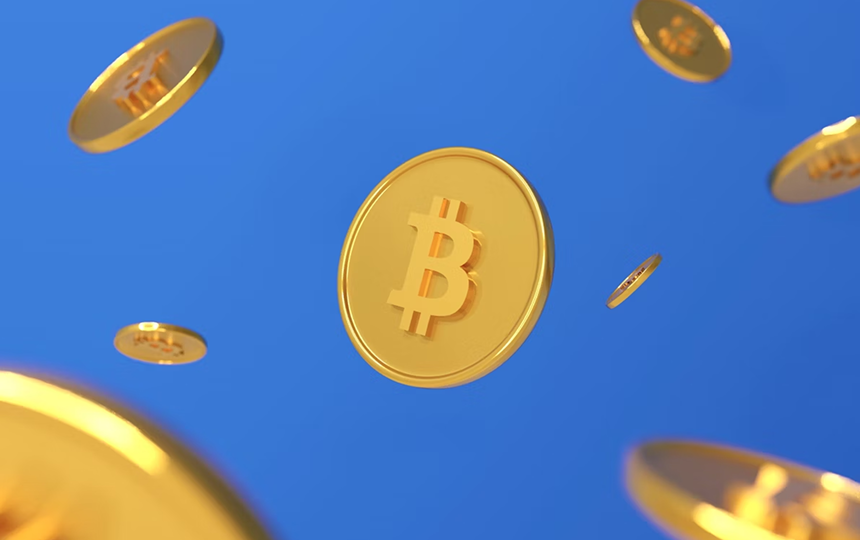
%204.svg)










